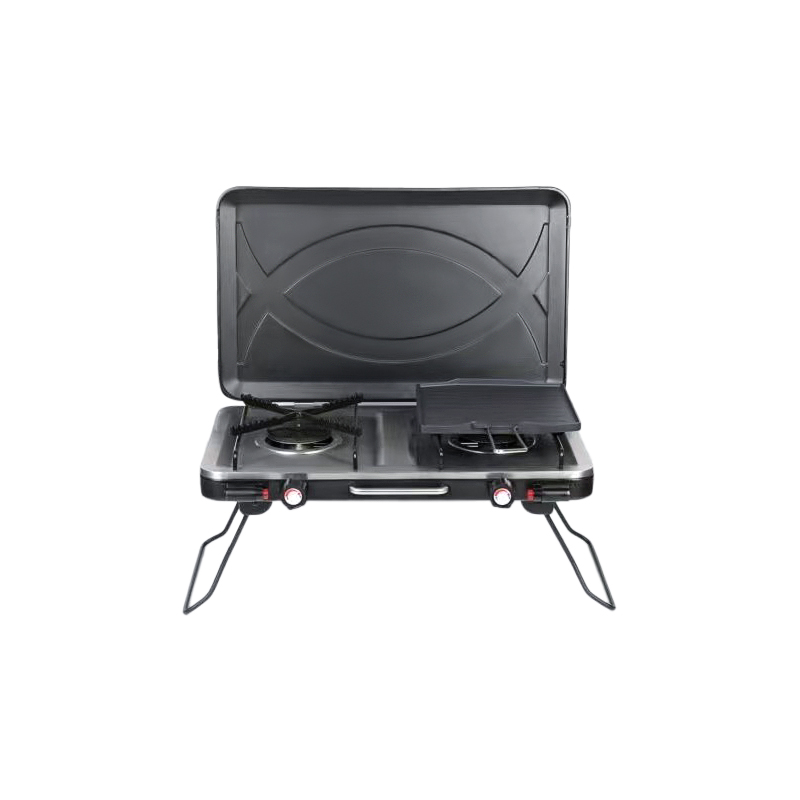Home / News / Industry News / How efficient is the compact high-output cook gas stove in terms of fuel consumption?
The efficiency of a compact high-output cook gas stove in terms of fuel consumption depends on several factors, including its design, BTU output, and usage patterns. Here are some key points to consider:
Burner Design: The efficiency of a stove's burner design profoundly influences its fuel consumption. Advanced burner designs leverage principles of heat transfer and combustion optimization to maximize energy efficiency. For example, stoves may incorporate heat exchanger technology, which efficiently captures and transfers heat from the flame to the cooking vessel, minimizing heat loss to the surroundings. Precise flame control mechanisms allow users to maintain consistent heat levels, reducing the need for excessive fuel consumption to compensate for fluctuations in temperature. By harnessing these technological advancements, modern stoves can achieve impressive levels of fuel efficiency while delivering reliable cooking performance.
Fuel Type: The choice of fuel significantly impacts a stove's energy output and, consequently, its fuel efficiency. Different fuel types exhibit varying energy densities and combustion characteristics, influencing overall efficiency. Propane, for instance, boasts a higher energy content per unit volume compared to butane or isobutane. As a result, stoves designed to accommodate propane may offer greater fuel efficiency, as they can extract more energy from each unit of fuel. Certain fuels may exhibit ascendant performance in specific environmental conditions. For example, propane tends to perform well in cold temperatures, making it suitable for outdoor cooking in winter conditions. By selecting the appropriate fuel type based on usage requirements and environmental factors, users can optimize fuel efficiency and enhance the overall cooking experience.
Usage Conditions: Environmental factors such as wind, altitude, and ambient temperature exert significant influence on a stove's fuel efficiency. In windy conditions, for instance, conventional stoves may experience heat loss due to wind-induced drafts, bring about inefficient combustion and increased fuel consumption. To address this challenge, modern stoves often feature integrated wind shields or wind-resistant burner designs, which help maintain positive combustion conditions by shielding the flame from disruptive airflow. Similarly, stoves engineered for high-altitude use incorporate specialized components such as pressure regulators to ensure consistent fuel delivery and combustion performance at elevated elevations. By accounting for these usage conditions and selecting a stove tailored to the intended environment, users can maximize fuel efficiency and cooking effectiveness across diverse scenarios.
Cooking Habits: The manner in which users utilize the stove, including cooking techniques and duration, profoundly impacts fuel consumption. Certain cooking methods, such as simmering or slow cooking, require lower heat settings and prolonged cooking times, resulting in reduced fuel consumption compared to high-heat, rapid-cooking methods. Stoves equipped with precise flame control mechanisms enable users to adjust the flame intensity with precision, allowing for efficient fuel utilization across a spectrum of culinary tasks. Innovative heat transfer technologies, such as heat exchangers or radiant burner designs, facilitate rapid and uniform heat distribution, minimizing cooking times and fuel consumption. By aligning cooking habits with the stove's capabilities, users can optimize fuel efficiency while achieving desirable cooking outcomes.



 English
English 中文简体
中文简体 Español
Español ++86 13567131698
++86 13567131698










